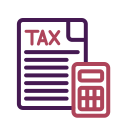Cut Your Tax Bill: Reducing Taxes on Investments in Canada
Chosen theme: Reducing Taxes on Investments in Canada. Welcome to a friendly, practical space where Canadian investors learn to keep more of every hard-earned dollar. Expect clear tips, real stories, and strategies you can actually use. Enjoy the read—and subscribe for fresh, tax-smart investing insights.

Start With the Basics: How Canada Taxes Investment Income
Capital gains in plain English
In Canada, only part of your capital gain is taxable, which is why buy-and-hold is so powerful. Realize gains when your income is lower, and avoid unnecessary trading that crystallizes tax. Share your approach in the comments—do you harvest gains strategically, or prefer to defer as long as possible?
Dividends and the dividend tax credit
Eligible Canadian dividends benefit from a gross-up and a federal and provincial dividend tax credit, often lowering tax compared to interest at the same income level. Know which dividends you receive and whether they are eligible or non-eligible. Curious about your province’s rates? Ask below and let’s compare experiences.
Interest, foreign income, and your marginal rate
Interest and most foreign income are fully taxed at your marginal rate, making placement crucial. Foreign dividends generally do not receive the Canadian dividend tax credit, and withholding taxes can bite. If you hold significant foreign assets, remember potential T1135 reporting thresholds and keep meticulous records all year.

TFSA: tax-free growth for goals big and small
Inside a TFSA, investment growth and withdrawals are tax-free, making it perfect for high-growth, high-income assets. Watch contribution room carefully to avoid penalties, and remember withdrawals restore room the following year. Many readers fund TFSAs first for flexibility—tell us how you prioritize yours and why.
RRSP: deferral, deduction, and withdrawal timing
RRSP contributions are deductible, deferring tax until withdrawal, ideally in lower-income years. Consider spousal RRSPs to balance future income and reduce total family tax. Plan conversions to a RRIF by age deadlines, and model withdrawals before pension and benefit phases begin to avoid avoidable bracket creep later.
FHSA: first home and an investing edge
The FHSA blends the RRSP’s deduction with the TFSA’s tax-free withdrawals for a qualifying first home. If plans change, transfers to RRSP space can preserve tax sheltering. Invest inside, not just save, to harness compounding. If you have used an FHSA, share what investment mix worked for you.
Place Your Assets Wisely: Tax-Efficient Asset Location
Interest from GICs, bonds, and high-interest savings ETFs is fully taxed, so protect it in RRSPs or TFSAs when possible. Many readers moved bond ladders into registered accounts and saw immediate tax relief. If space is limited, evaluate your risk budget and shift the least tax-efficient holdings first.
Place Your Assets Wisely: Tax-Efficient Asset Location
Broad equity ETFs can defer taxes until you sell, while Canadian eligible dividends receive credits that soften the bite. Buy-and-hold reduces distributions and trading costs. Keep an eye on annual T3 slips and reinvested distributions. What equity ETFs have proven tax-friendly in your portfolio? Share symbols and stories.
Harvest and Split: Legal Tactics to Cut the Bill
If a security drops, selling to realize a loss can offset gains—just avoid buying the same or identical property within the restricted window. Maya from Saskatoon swapped into a similar, not identical, ETF for 31 days and saved thousands. Keep records and share your harvesting checklist below.

Real Estate and Private Investments: Hidden Tax Angles
01
Principal residence and change-of-use basics
The principal residence exemption can shelter gains, but sales must be reported. Renting part of a home or changing its use has tax consequences, elections, and record-keeping needs. Readers who moved for work often missed reporting details. Have you navigated a change-of-use? Share lessons others should not learn the hard way.
02
Rental properties: deductibles and CCA caution
Interest, property taxes, insurance, and eligible repairs are deductible, but capital cost allowance demands care. Claiming CCA can reduce current tax but may create recapture later. Track expenses, separates repairs from improvements, and keep digital receipts. Landlords—what expense categories saved you most, and how do you organize records?
03
Private markets, CCPC shares, and the LCGE
Qualifying small business corporation shares may unlock the lifetime capital gains exemption if specific tests are met. Early planning helps maintain eligibility and avoid unpleasant surprises. Founders often clean corporate balance sheets well before a sale. If you have navigated a QSBC sale, what preparation made the biggest difference?
Retirement Drawdown and OAS Clawback Planning
Smoothing taxes with pre-71 RRSP withdrawals
Filling lower brackets with planned withdrawals before mandatory RRIF minimums can reduce total lifetime tax and avoid benefit clawbacks. Readers who modeled withdrawals starting in their early sixties often reported steadier taxes. Do you run projections each fall? Share your favorite tools or spreadsheets to compare scenarios.
Pension income splitting and CPP/OAS timing
Splitting eligible pension income can meaningfully lower combined taxes. Deferring CPP or OAS can increase benefits and sometimes keep income under clawback thresholds. The right decision depends on longevity, other income, and tax rates. Tell us: which timing choice did you make, and what tipped the scales?
RRIF, TFSA, and non-registered cash flow choreography
Coordinate withdrawals: harvest dividends and capital gains thoughtfully, fund TFSAs annually using after-tax dollars, and manage RRIF amounts to control brackets. Some retirees tap non-registered assets first to keep flexibility. What sequence worked for you, and how did it change your tax slip totals year to year?
